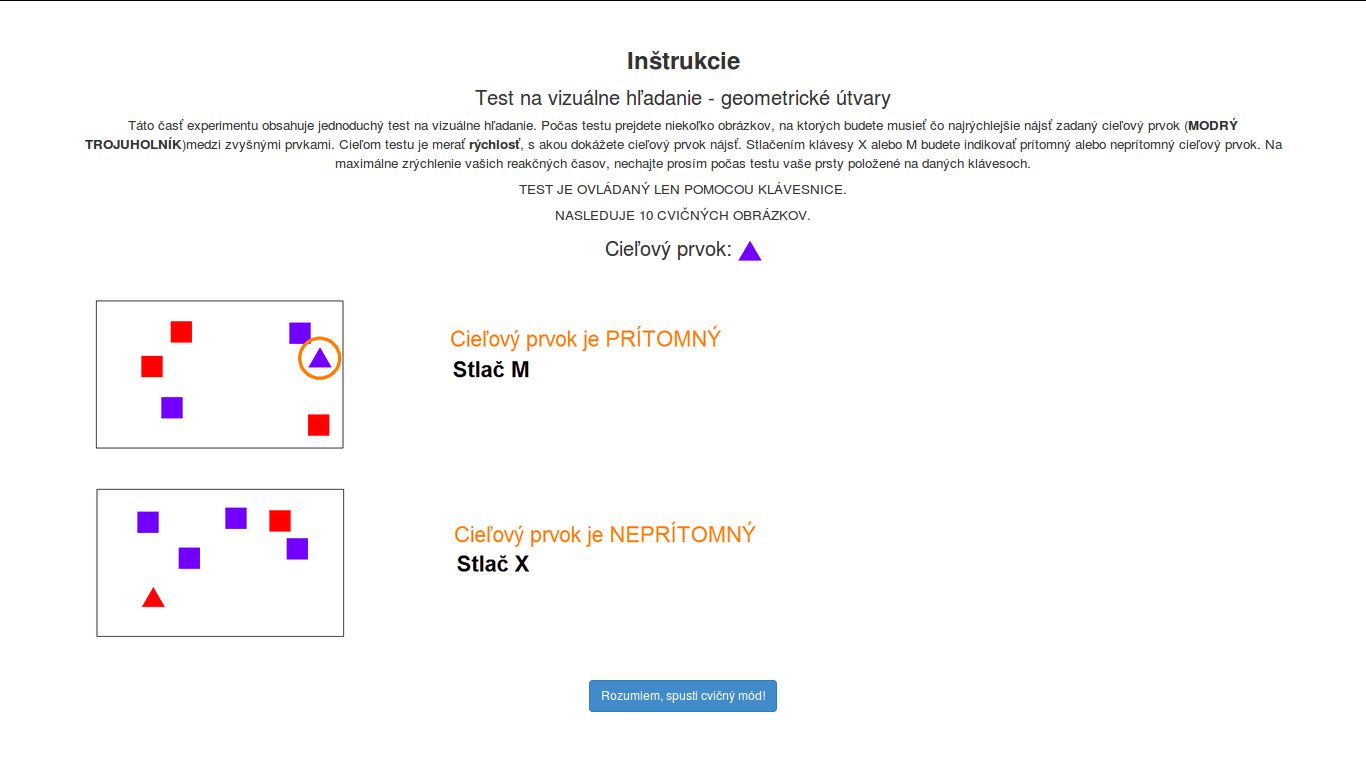|
Evaluation of User Experience by Eye Tracking Mária Dragúňová Bachelor thesis project supervised by prof. Mária Bieliková |
Motivation
Findability is one of the most important aspects of user experience. If the desirable content is not findable, value of a whole web site is affected. When a website visitor cannot find desired element, e.g. product in an e-shop, he cannot buy it as well and it means a serious problem for a website owner. To measure findability, we use measures, which assess the users’ efficiency of locating the target. However, people are different and therefore the measured values differ. Individuality of a person reflects not only in his appearance or behavior, but also in the visual perception of the world. Human eyes fixate on multiple points on the screen during the target search, therefore eye tracking sheds light on findability issues.
We proposed a method to improve measuring of a target findability by taking into consideration an evaluation of visual search ability of a person participating in a user study. Our aim is to create a special visual search task and use it as kind of a calibration before the start of a UX testing.
Method
We focus on the process of target localization on displayed screen. In order to evaluate the user’s visual search ability, we propose the creation of our own visual search task, which contains set of specially selected stimuli. This task is created according to the results of a quantitative experiment, choosing the stimuli with significant variety of results of individuals. We propose using standard visual search task as well as our developed visual search task with icons from web enviroment.
Our proposed method consists of following steps:
- A participant goes through the visual search task.
- Afterwards, he performs a user testing according to the prepared scenario.
- Calibration of the participant by calculating his visual search ability on the basis of his results in visual search task.
- Adjustment of participants' visual search ability in the process of evaluation of findability metrics measured in the user testing.
Evaluation
We evaluated our method by implementation of website containing two visual search tasks (shown in the figure below) and task on measuring findability of elements on several websites. We realized controlled quantitative experiment in eye tracking laboratory. The 65 participants were tested, but we had to exclude 20 uncomplete recordings. Finally, data from 45 participants were used to evaluate their visual search abilities.
We proposed and evaluated two measures. First, RT is a standard measure used in majority of existing visual search tasks. Second, the number of fixations prior to the indicating the end of the search is the measure available thanks to the eye tracking. We calculated an evaluation, which signify how good a visual search ability of a participant is in compare to the other participants from our experiment.
To examine the dependence between results of participant in visual search task and in the search task on the website, we divided participants according to their evaluations in these vectors into 3 groups - best, medium and worst. Afterwards, we picked two vectors, compared these groups and calculated the percentage of participants, who were equally classified in both vectors. We achieved the success rate of 55.56% when comparing the evaluations created from the numbers of fixations on stimuli in visual search for an icon and evaluations created from the numbers of fixations on websites.

Publications
- Dragúňová, M.
- Evaluation of User Experience by Eye Tracking and Emotions Analysis
Bachelor thesis, Slovak University of Technology in Bratislava 2016.
49p.
 pdf (in Slovak)
pdf (in Slovak)
- Dragúňová, M.
- Considering Human Visual Search Abilities in Eye Tracking User Studies. In Proc. in Informatics and Information Technology Student Research Conference IIT.SRC 2016. Best Bachelor Paper Award.
| to Homepage | to Teaching | to the Top |
|
||
|
||